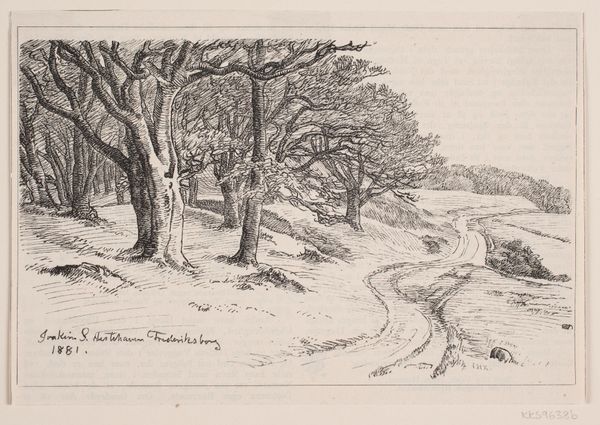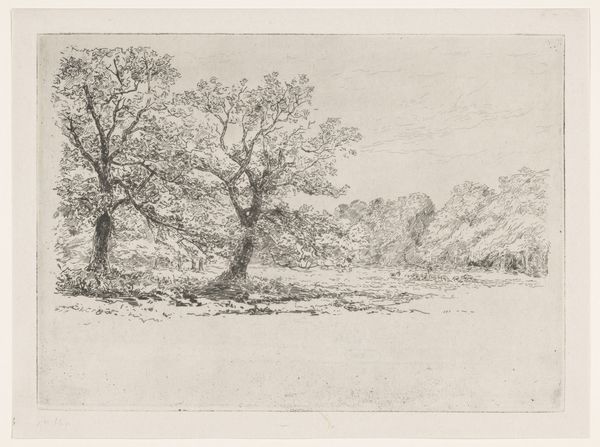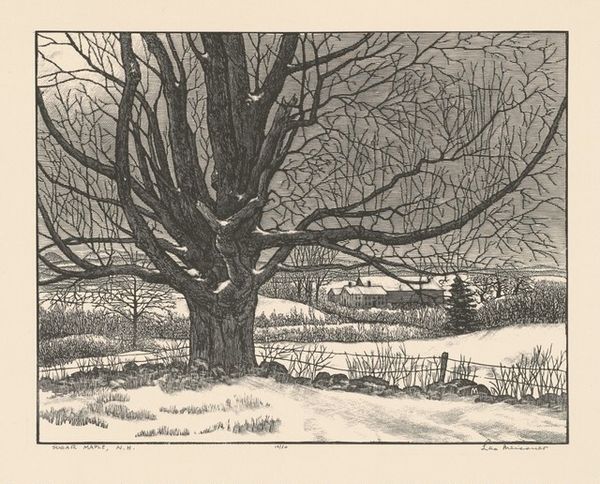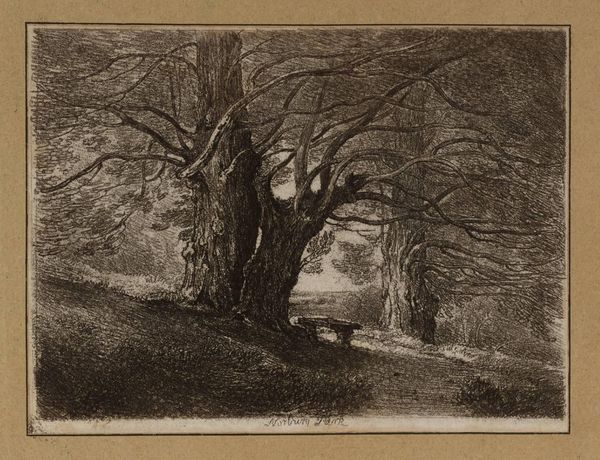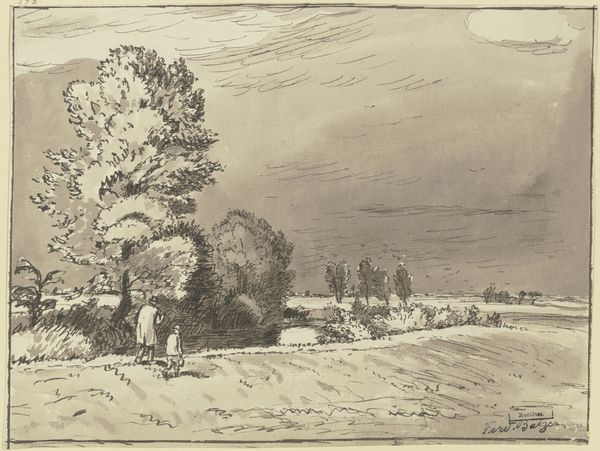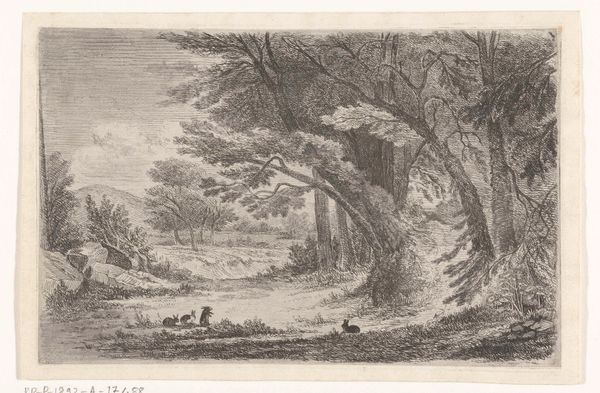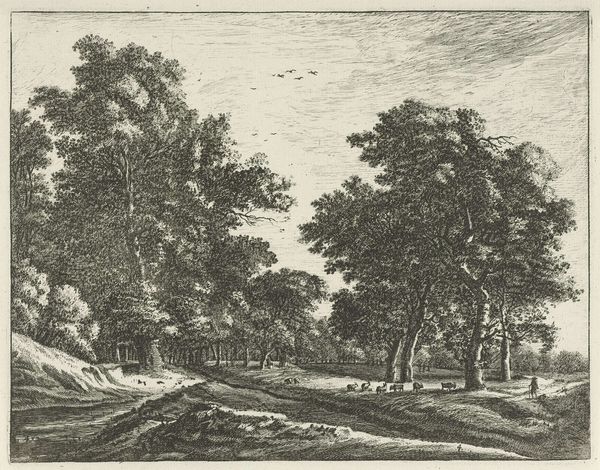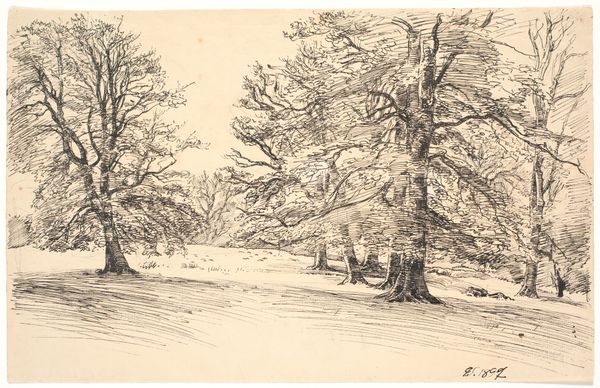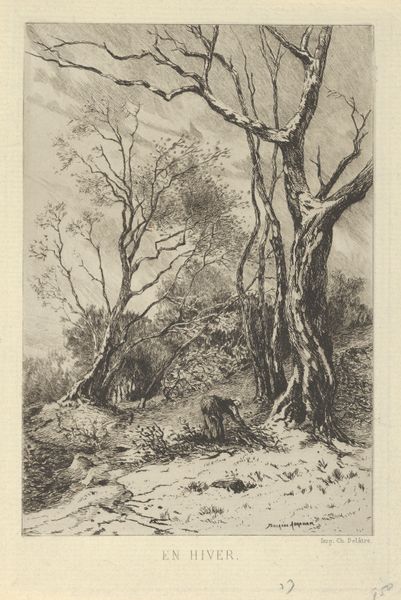
print, etching
# print
#
etching
#
landscape
#
naturalism
#
realism
Dimensions: 150 mm (height) x 198 mm (width) (billedmaal)
Editor: Here we have Johan Hildebrand’s "Gamle ege ved Eremitagesletten. Vinterdag," an etching from 1882. The starkness of the trees against the winter landscape is striking. I'm curious about the artist's choice of printmaking, etching specifically, for a subject so rooted in nature. What draws your attention in this piece? Curator: Well, immediately the material process leaps out. Etching allows for the creation of intricate lines, mimicking the bare branches and textures of the old oak trees. Think about the labor involved – the repetitive actions of marking the plate. The consumption of the landscape as image – who was buying and viewing such scenes? Editor: That makes me consider the kind of labor Hildebrand was trying to depict within the landscape itself, like perhaps he was suggesting land management or some other means of production. Curator: Exactly. Are we viewing nature untouched, or a managed resource? Consider the materials: metal plate, acid, paper, ink. All products of human industry, used to frame a ‘natural’ scene. Do the severe marks contrast or amplify the meaning of the print itself? Editor: It almost feels like he’s hinting at a human impact on nature. Maybe I'm overthinking this but all the horizontal lines are making me thing that something is artificial... Curator: Not at all. Naturalism and Realism as artistic movements were deeply intertwined with societal shifts – the rise of industry and urbanization. How did art function as a commodity, reflecting or resisting these changes? Does Hildebrand's work offer commentary? Editor: So it’s not just a pretty landscape. It reflects larger questions about how we interact with our environment and represent it through manufactured means. Thank you! Curator: Precisely. Material analysis reveals layers of meaning that might otherwise remain unseen.
Comments
No comments
Be the first to comment and join the conversation on the ultimate creative platform.


